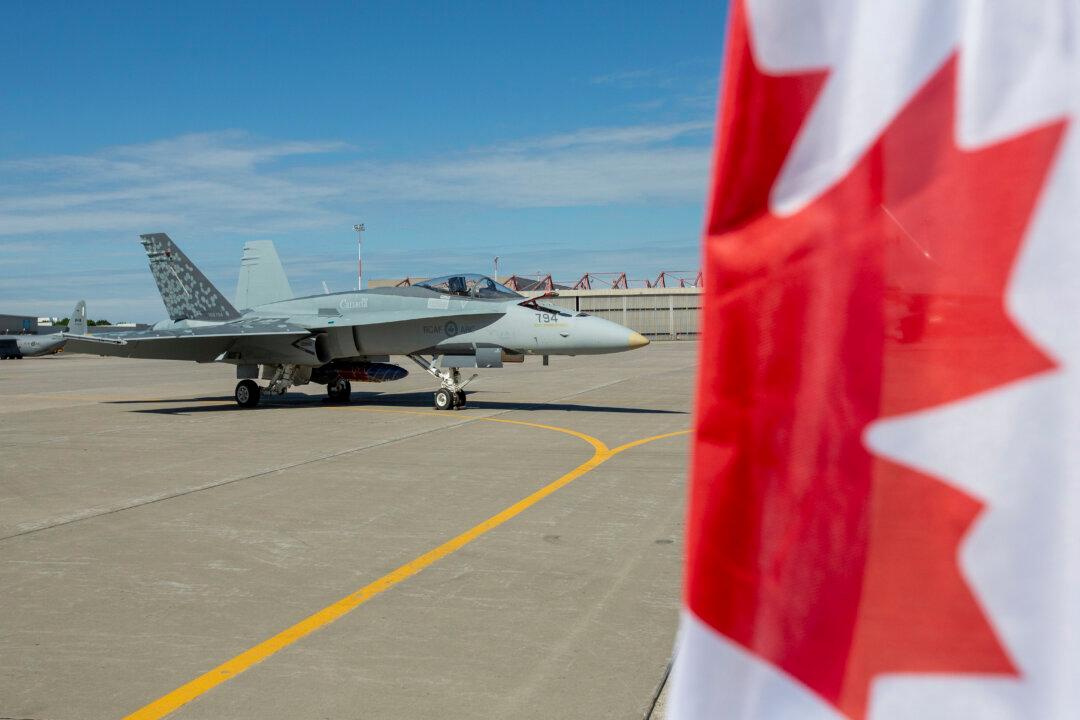Commentary
If Donald Trump’s new tariffs go into effect next month, the Canadian defense industry will be among the hardest-hit casualties. While these tariffs are ostensibly aimed at countering unfair trade practices and bolstering American industry, their unintended consequences will reverberate across North America’s deeply integrated defense industrial base. The effects will be disproportionately severe on Canada, jeopardizing its defense sector, its ability to meet NATO obligations, and its already fragile relationship with Washington on security matters. Far from strengthening the U.S. defense industry, these tariffs threaten to weaken North America’s collective defense capabilities and undermine efforts to secure the Arctic, North Atlantic, and North Pacific.
Canada’s Defense Industry Is Not Just ‘Foreign’—It’s a US Partner
Canada’s defense sector is not some distant, adversarial entity; it is an integral part of the North American defense industrial ecosystem. Many Canadian defense firms are deeply embedded in U.S. supply chains, manufacturing critical components for American platforms, including fighter jets, naval vessels, and munitions. The Defense Production Sharing Agreement (DPSA), in place since 1956, was specifically designed to ensure a seamless defense production relationship between the two countries.Tariffs would throw a wrench into this well-oiled machine, increasing costs for both U.S. and Canadian firms. Major American defense contractors such as Lockheed Martin, Boeing, and General Dynamics rely on Canadian suppliers for high-tech components. For instance, Magellan Aerospace, a key Canadian supplier, provides crucial parts for the F-35 fighter jet program. Similarly, IMP Aerospace in Nova Scotia provides maintenance and repair services for U.S. military aircraft. Tariffs would not only drive up prices but also introduce uncertainty into a system that depends on predictability and efficiency. Disrupting supply chains in the name of economic nationalism will not create American jobs; it will simply make weapons systems more expensive, less competitive, and harder to produce at scale.
The Immediate Economic Hit: A Death Blow to Canadian Firms?
For Canada, the consequences will be especially brutal. Unlike the U.S., which has a massive domestic defense market, Canadian defense firms depend on exports—and the United States is by far their largest customer. In 2022, nearly 60 percent of Canadian defense exports went to the U.S. Tariffs could render many of these exports uncompetitive overnight, driving some firms out of business and pushing others toward European and Asian markets—a strategic loss for North American defense integration.Moreover, tariffs would create cascading effects on investment. With higher costs and lower certainty, defense companies operating in Canada—including major players like General Dynamics Land Systems (which produces LAV 6.0 armored vehicles in Ontario) and CAE (a global leader in military flight simulators used by the U.S. Air Force and Navy)—could see contracts dry up. This could lead to layoffs, stunted innovation, and an exodus of talent to the U.S., further hollowing out Canada’s already underfunded defense sector.
NATO Commitments and National Security: A Tariff Own Goal
At a time when Washington is pressuring Canada to meet its NATO spending commitments, imposing tariffs on Canadian defense exports is a self-inflicted wound. Canada has already struggled to reach the 2 percent of GDP defense spending target, and its procurement system is notoriously sluggish. Making defense goods more expensive will only exacerbate these problems, making it even less likely that Canada can field the capabilities needed for North Atlantic and Arctic security.Ironically, Trump has been vocal about wanting allies to contribute more to defense. Yet by imposing tariffs, his administration would be making it harder for Canada to do just that. The U.S. should want a stronger, better-equipped Canada—not one hobbled by economic barriers that weaken its ability to invest in collective defense.
The Arctic and North Pacific: Undermining Continental Defense
These tariffs would also undercut critical North American defense efforts, particularly in the Arctic and North Pacific. Both regions are becoming increasingly contested as China and Russia ramp up military activities. The U.S. and Canada should be reinforcing their ability to defend the northern approaches and maritime choke points, not erecting artificial economic barriers that hinder cooperation.Tariffs would make it harder for Canadian firms to supply defense infrastructure essential for Arctic operations, including icebreakers, surveillance systems, and cold-weather military gear. For example, Canada’s Seaspan Shipyards, which has been involved in producing joint U.S.-Canada defense vessels, would face rising costs that could delay crucial shipbuilding projects. If the U.S. is serious about deterring great-power rivals in these regions, it cannot afford to weaken its closest defense partner through protectionist policies that serve no strategic purpose.
A Lose-Lose Scenario: The Need for an Exemption
If Trump follows through with these tariffs, the best course of action for both countries is to carve out a national security exemption for the defense sector. The U.S. has done this before, exempting key allies from trade measures when it serves broader strategic interests. Canada qualifies on all counts. Failing to do so will damage not just Canadian industry but also the U.S. defense sector, forcing American companies to scramble for alternative suppliers and potentially delay crucial weapons programs.The fundamental reality is this: North America’s defense industries are inextricably linked. Any policy that harms one will inevitably harm the other. If Trump’s tariffs go into effect as planned, they will deal a severe blow to Canadian defense manufacturers, drive up costs for American military procurement, and ultimately weaken the ability of both nations to address growing security threats.
A policy designed to protect American industry should not come at the expense of America’s closest ally. If these tariffs proceed without an exemption, the U.S. will not only be shooting Canada in the foot—it will be shooting itself in the leg.
From RealClearWire
Views expressed in this article are opinions of the author and do not necessarily reflect the views of The Epoch Times.





